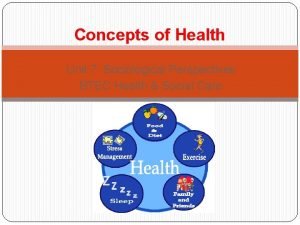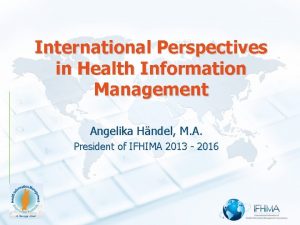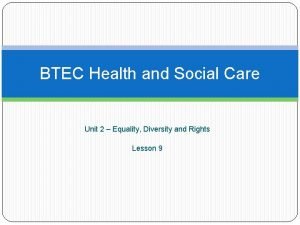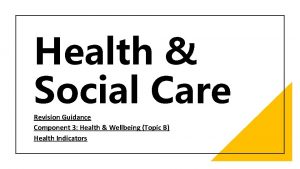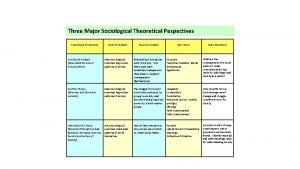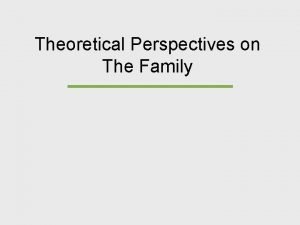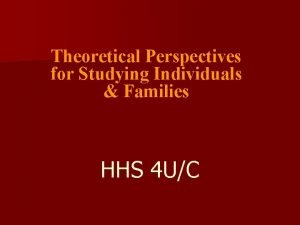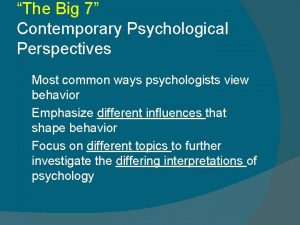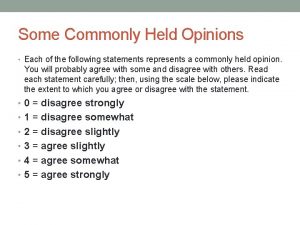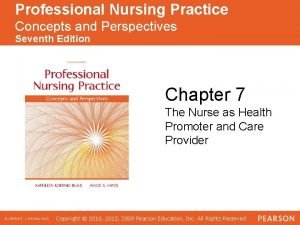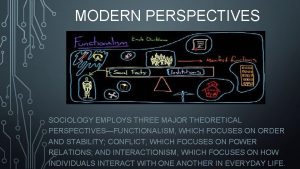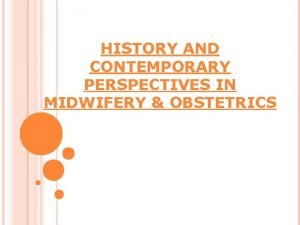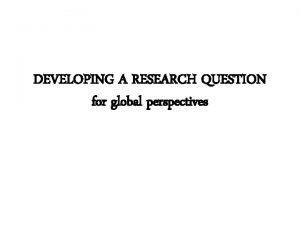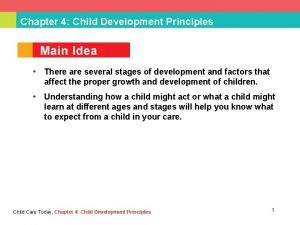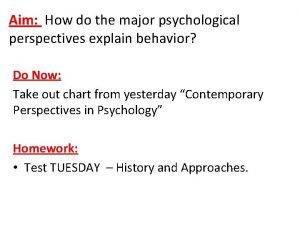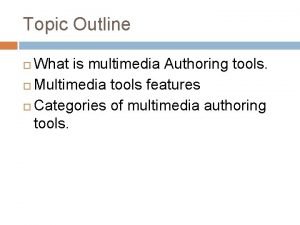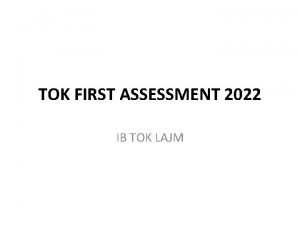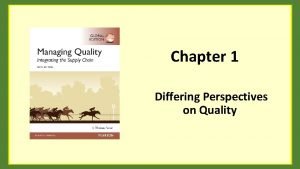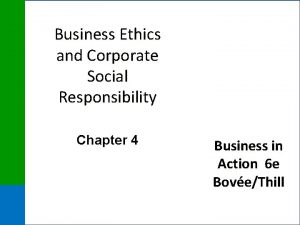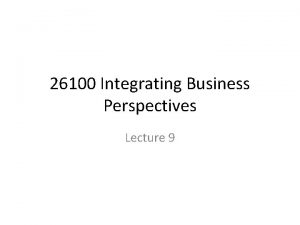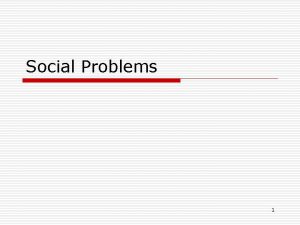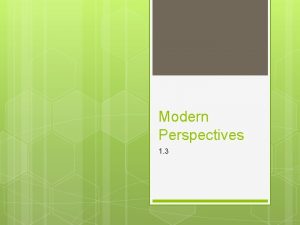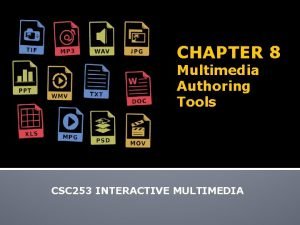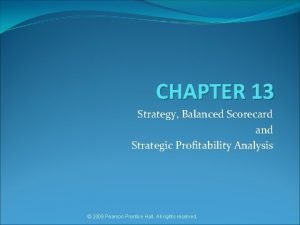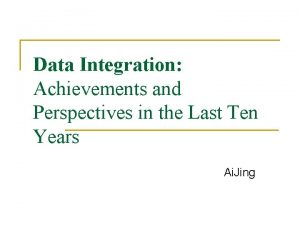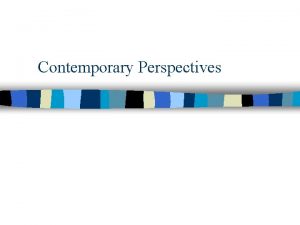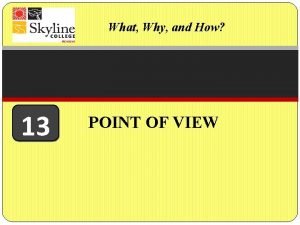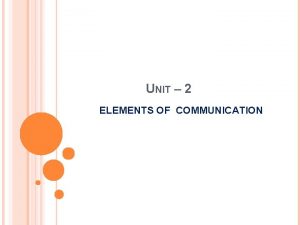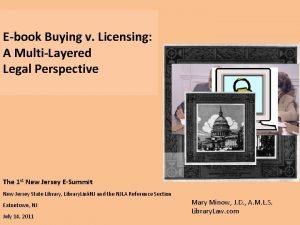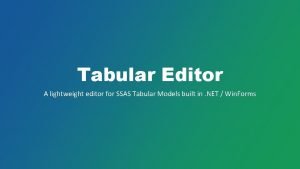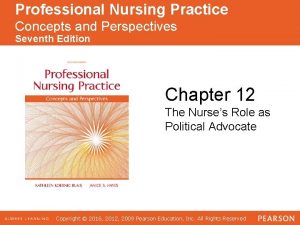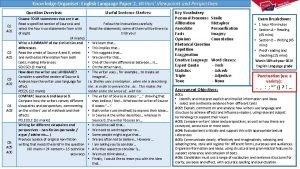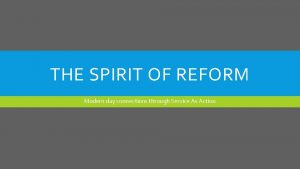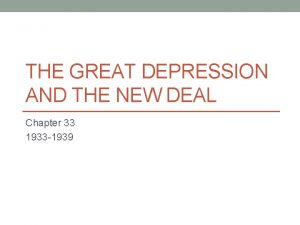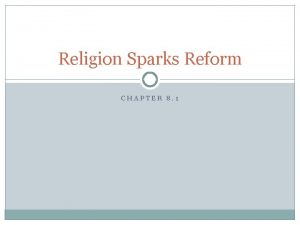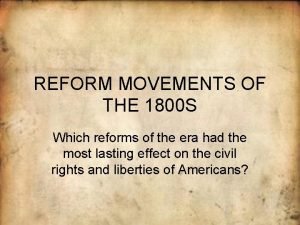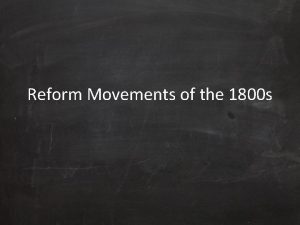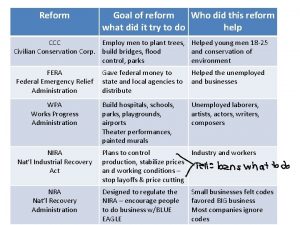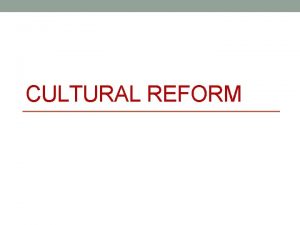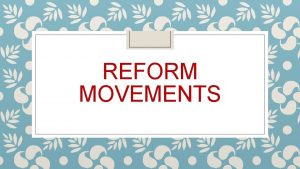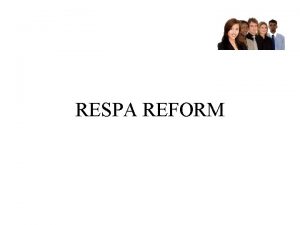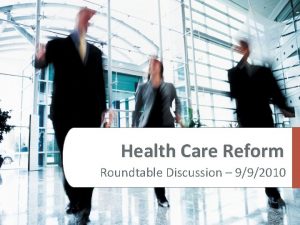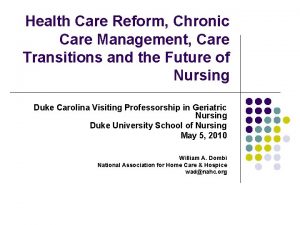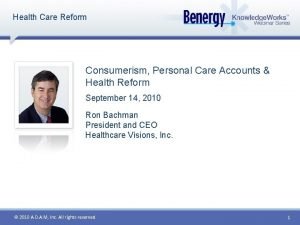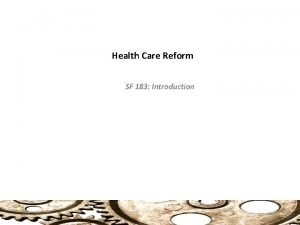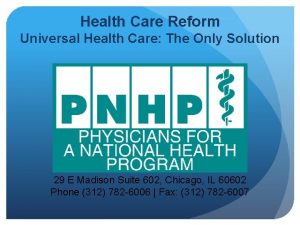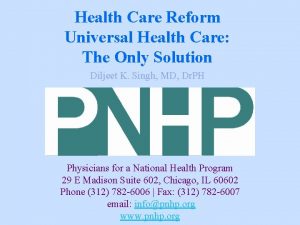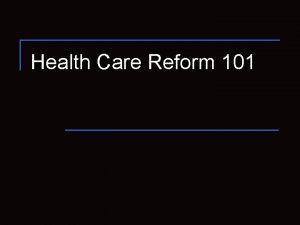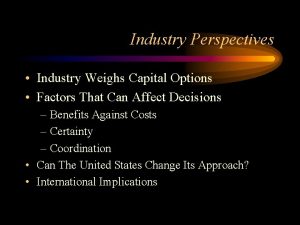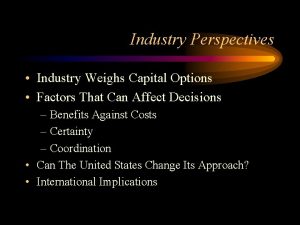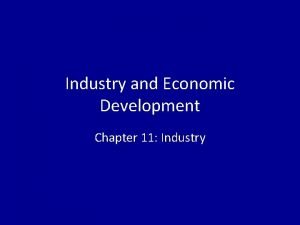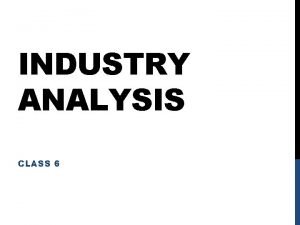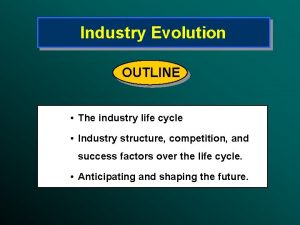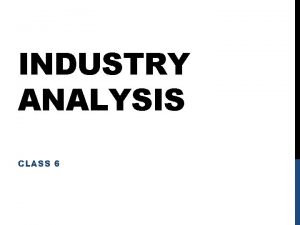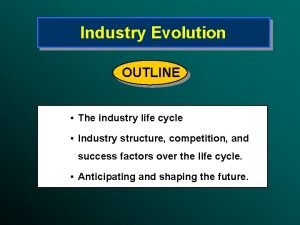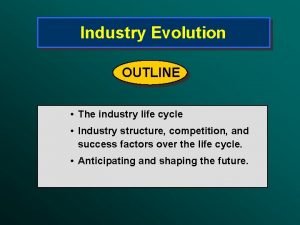HEALTH CARE INDUSTRY PERSPECTIVES ON HEALTH CARE REFORM




















































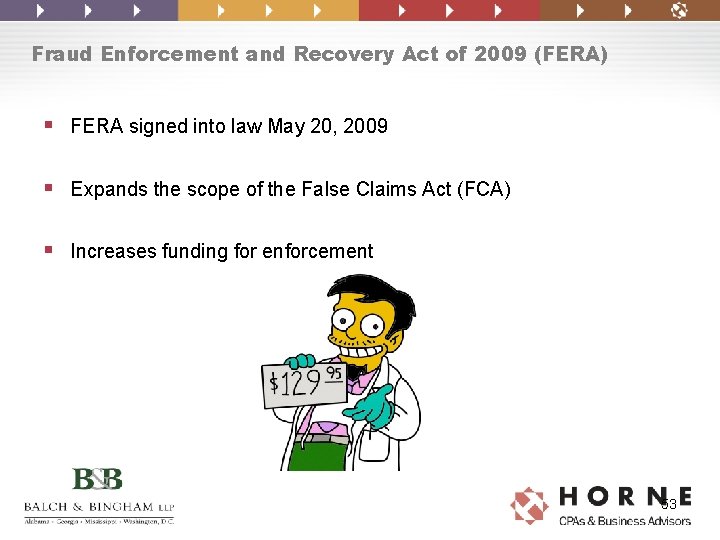
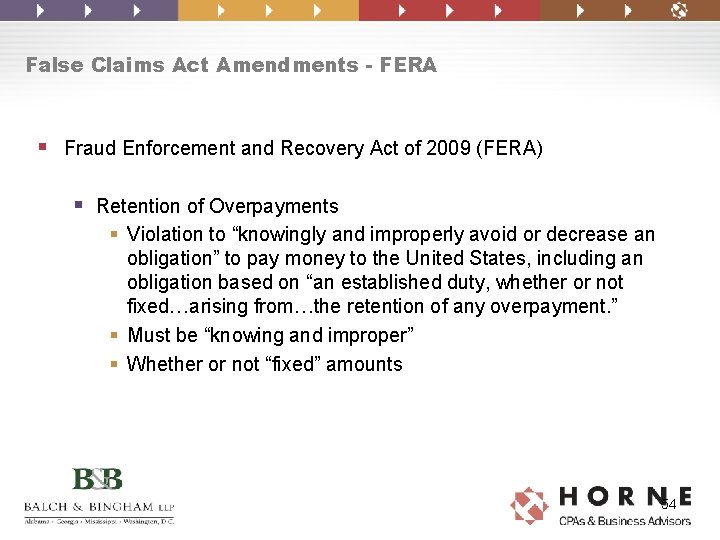
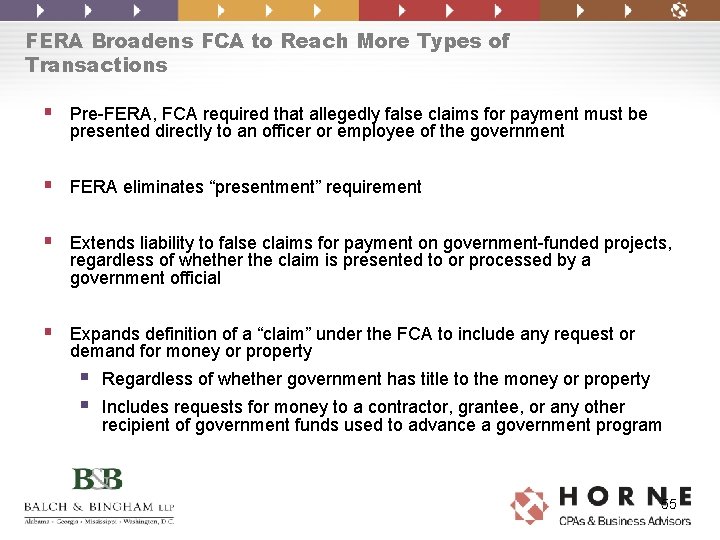
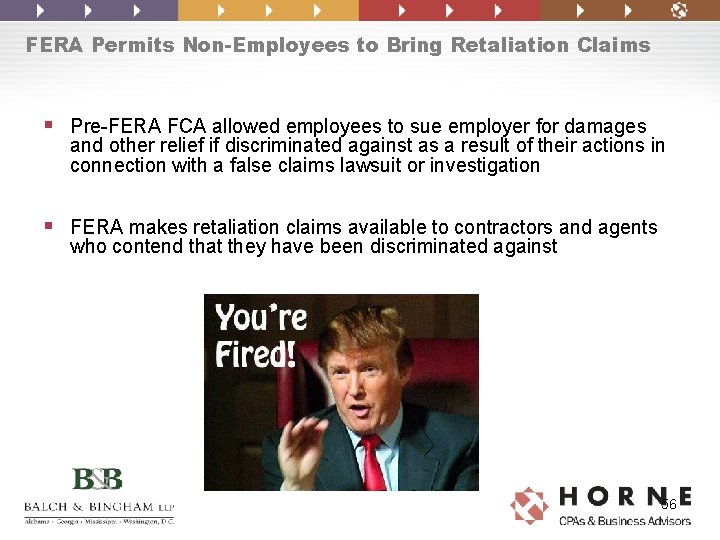
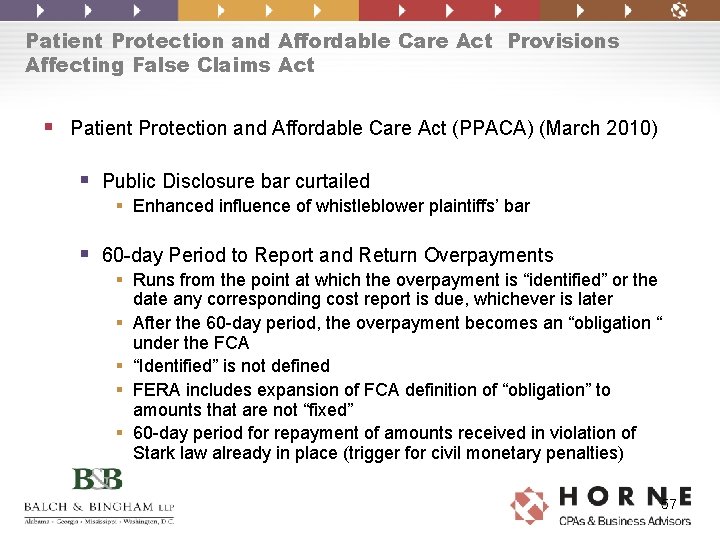
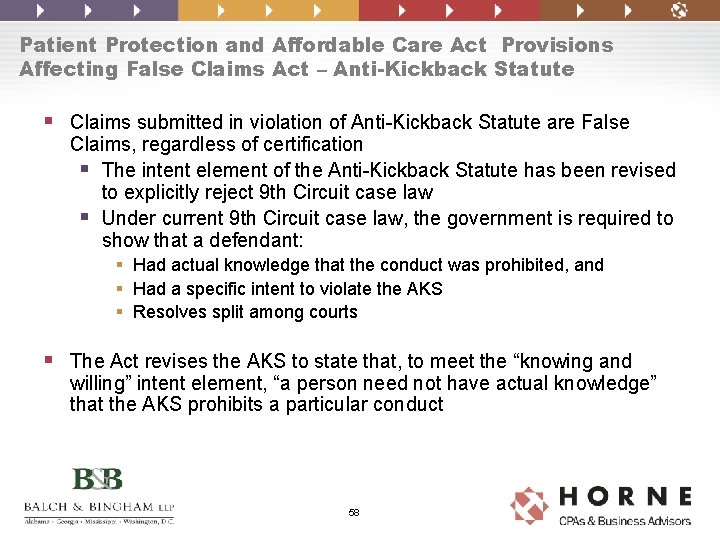
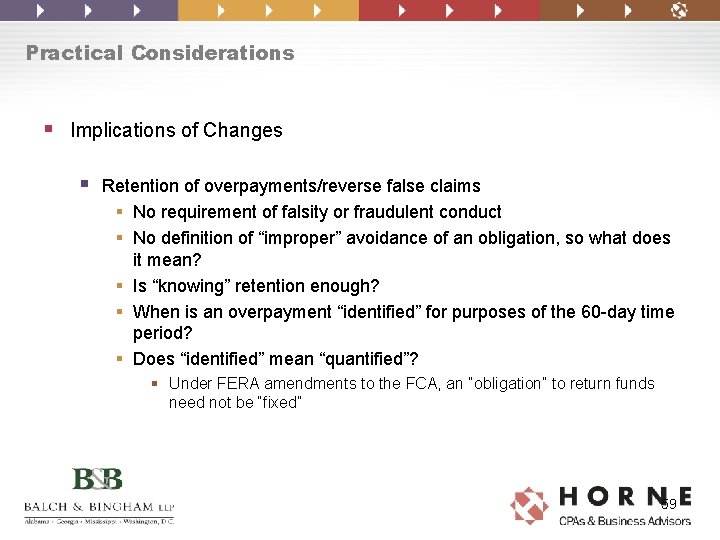
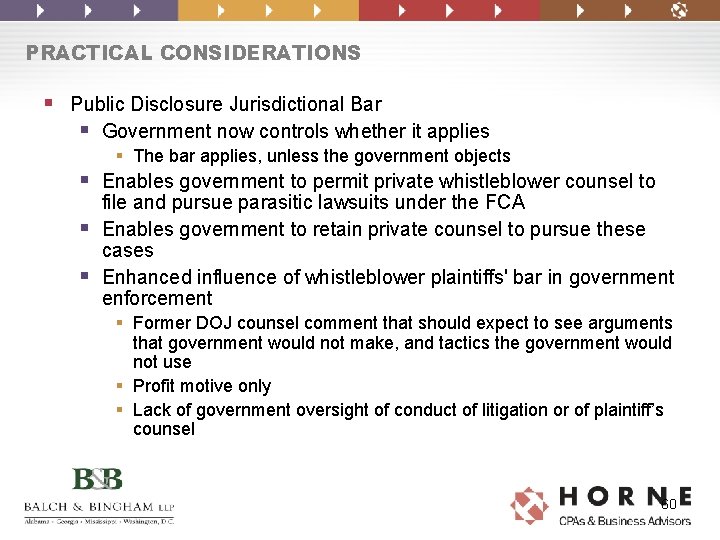
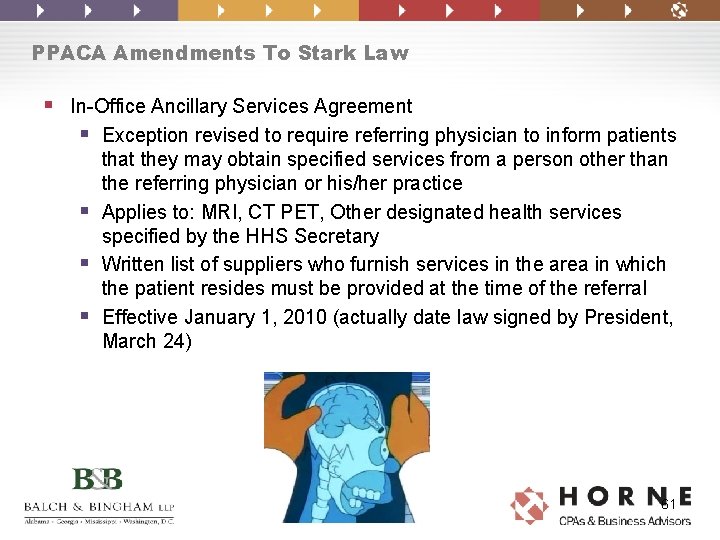
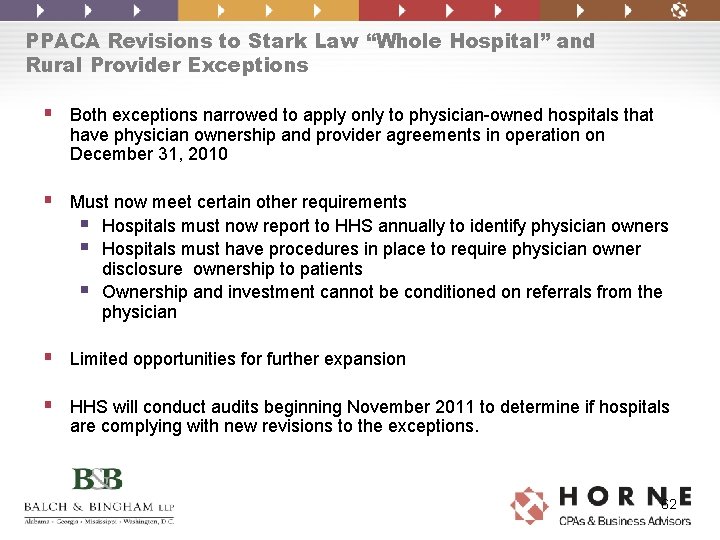


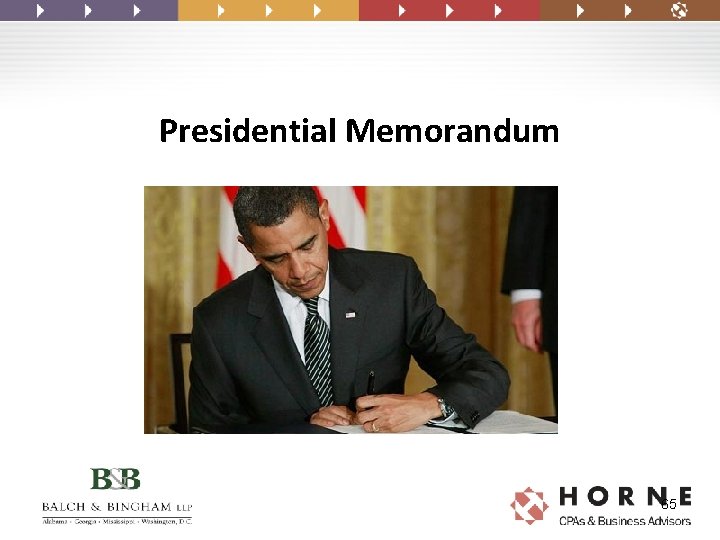
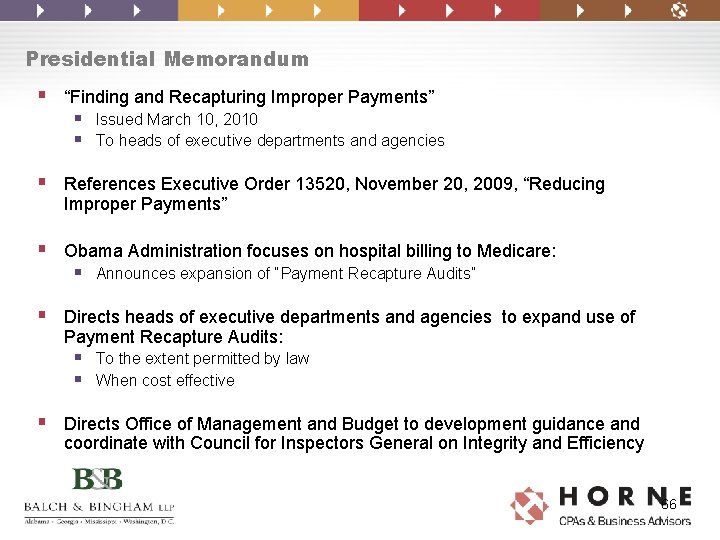
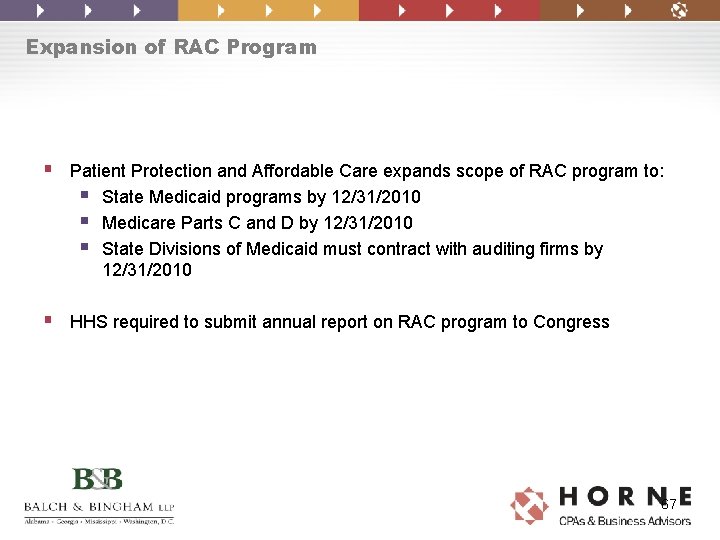
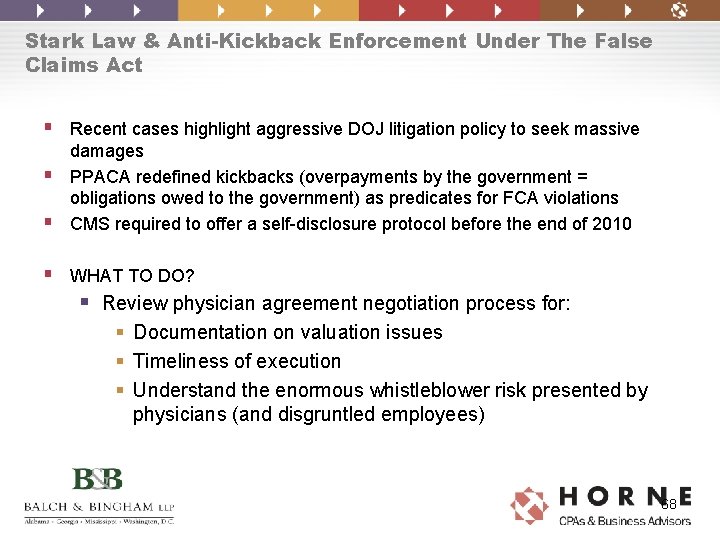
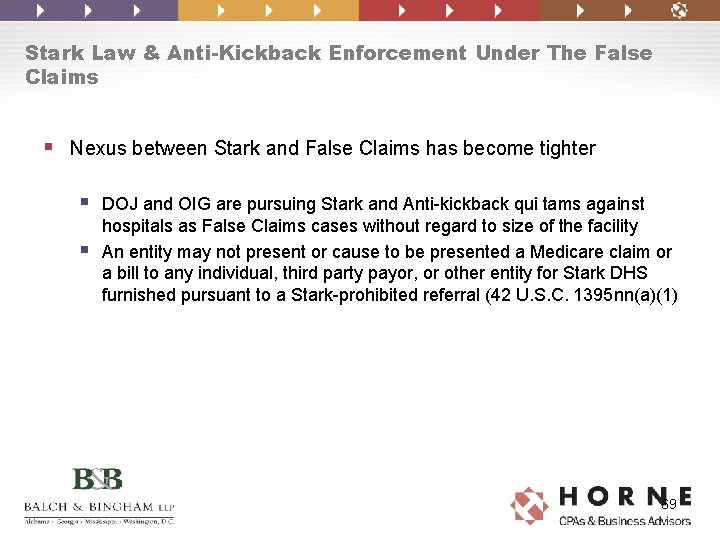
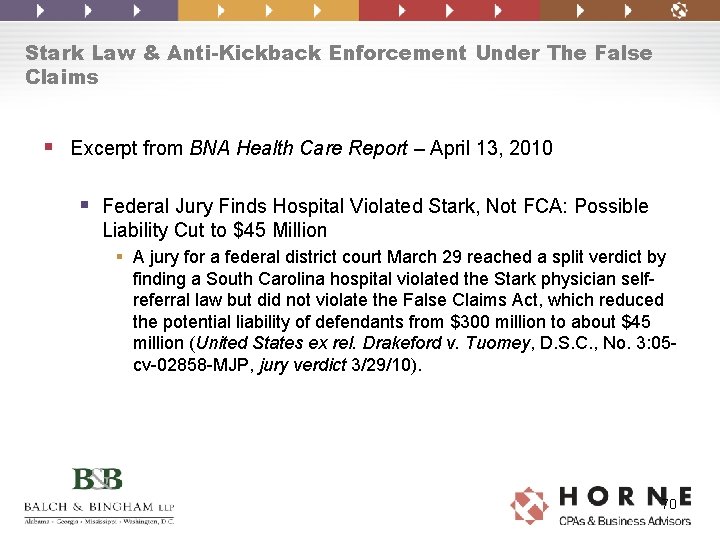


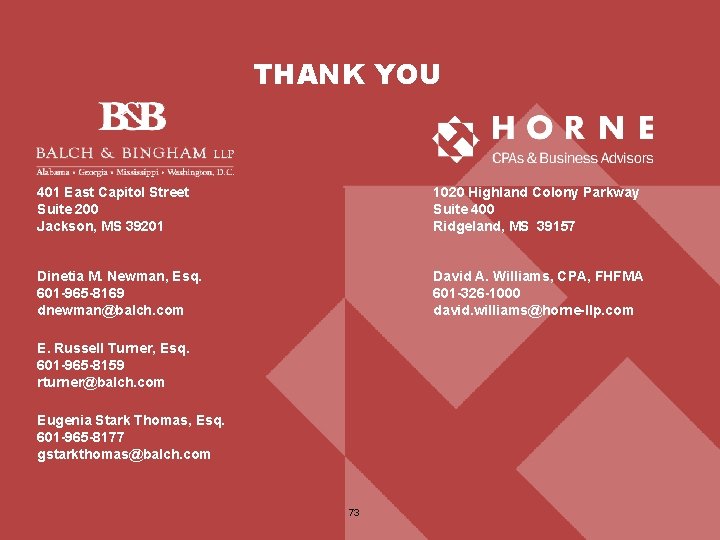
- Slides: 73

HEALTH CARE INDUSTRY PERSPECTIVES ON HEALTH CARE REFORM Mississippi Chapter Healthcare Financial Management Association 2010 Ethics, Accounting & Auditing and PFS Workshop June 11, 2010 Hilton Hotel, Jackson MS 1

STRATEGIC OPPORTUNITIES FOR HOSPITALS 2

Health Care Delivery System Reform The Senate Finance Committee Legislation Will Include Payment Reforms Aimed at Improving the Delivery System Increase Health Care “Value” Electronic Health Records 3 Manage Radiology Benefits 3. Prerequisite Accountable Care Organizations Tactics Bundled Payments 2. Reduce Costs Improve Quality Reduce Preventable Readmissions The Goal Value-Based Purchasing 1.

A Roadmap to Reform Most of President Obama’s Ambitious Health Care Goals Depend on Bending the Cost Curve Causal Relationship Between the President’s Health Care Goals Catalyst Reduce Cost Growth Invest in Prevention and Wellness Primary Outcome Assure Affordable Coverage Improve Safety and Patient Care Secondary Outcome Maintain Coverage During Job Transitions End Barriers for Pre-Existing Conditions Tertiary Outcome Protect Families from Medical Bankruptcy Guarantee Choice of Docs and Health Plans Source: 1) http: //www. whitehouse. gov/issues/health_care/ 4

Selected Provisions § Administrative Simplification § Moving to standardized processes by evaluation of systems every 3 years using input from the National Committee on Vital Statistics, the Health Information Technology Policy Committee, the Health Information Standards Committee, standard setting organizations and stakeholders -Public Health Services Act Sec. 399 HH(a)), as added by Act Sec. 3011 of the Patient Protection and Affordable Care Act (P. L. 111 -148)). § Delivery System Changes § § § Bundling – beginning 2013 pilots thru 2015 (Social Security Act Sec. 1866 D, as added by Act Sec. 3023 of the Patient Protection and Affordable Care Act (P. L. 111 -148)). Readmissions – 2013 penalties for “excessive re-admissions” (SSA Sec. 1886(q)(3), as added by Act Sec. 3025 of the Affordable Care Act). Hospital acquired conditions -Act Sec. 2702 Accountable Care Organizations – 2012, allows hospitals and physicians to provide leadership in voluntary ACOs. Some savings to be shared Section 3022 of the Patient Protection and Affordable Care Act (P. L. 111 -148) adds Social Security Act Sec. 1899 Innovation Center – 2011 creates a Center for Medicare and Medicaid Innovation designed to improve quality and reduce program expenditures- Section 3021 of the Patient Protection and Affordable Care Act (P. L. 111 -148) amends Title XI of the Social Security Act by adding the new SSA Sec. 1115 A 5

Global Payments The Legislation Will Include Expanded Bundled Payment Demonstration Projects Sample Inpatient Stay 1: Current Payment Methodology: MS-DRG Pmt - 3 Days Admit Physician Fee Schedule Discharge Home Health PPS Episode + 7 days Readmission: MS-DRG Pmt + 14 days + 19 days + 27 days + 30 days 30 Day Episode of Care 2: Proposed Bundled Payment System: MAC Payment MS-DRG + Avg. PAC Cost – “Efficiencies” Hospital Negotiated Pmts 6

Selected Provisions § Independent Payment Advisory Board (IPAB) Section 3403 of the Patient Protection and Affordable Care Act (P. L. 111 -148) § § Binding payment recommendations on Medicare and non-binding on private insurers payments to providers Exclusion such as hospitals (except CAH) until 2019 § 340 B drug program extended Act Sec. 7101(a) of the Patient Protection and Affordable Care Act (P. L. 111 -148), amending Public Health Service Act Sec. 340 B(a)(4) by adding subparagraphs (M) through (O) § Market basket update adjustments -Affordable Care Act Sec. 3401 § RAC expansion -Affordable Care Act Sec. 6411 § Graduate Medical Education – no reductions in IME payments but re-distributes 65 percent of unused residency to primary care and surgeons SSA Sec. 1886(h)(8)(B), as added by Act Sec. 5503(a)(4) of the Affordable Care Act 7

Something To Think About § Be proactive, explore how to make the new legislation work in your organization § Ignoring the delivery and payment system changes will be detrimental § Most importantly, understand totally where your revenue comes from and how this will change § Tax Exemption 8

Financially Positive or Negative for Health Care Providers § Modeling § Market Basket Update § DSH-UPL § Hospital Acquired Conditions § Physician Payment Revisions § Contracts with other payers 9

Being Pro Active § § Model impacts of Medicare and Medicaid Estimate income/ volume levels of “new patients” Evaluate service lines Evaluate costs § § Direct care Support 10

Know the margins – The Driving Forces 11

Model of Governmental Payers 12

Non Governmental Payers § § Impact of Health Insurance Exchanges on traditional insurance Impact of family coverage and shifts to employers Impact of “pay the penalty” un or under insured Remember – “bend the cost curve” 13

Being Pro Active § § Model impacts of Medicare and Medicaid Estimate income/ volume levels of “new patients” Evaluate service lines Evaluate costs § § Direct care Support 14

Reviewing Service lines § Outpatient Rehabilitation Services § Primarily two services – Occupational & Speech Therapy § Determined the payer mix was unable to sustain the current level of expense. § Due to the competition and availability in the service area, the Hospital elected to discontinue service. § Net increase to contribution margin $600, 000 annually. 15

Being Pro Active § § Model impacts of Medicare and Medicaid Estimate income/ volume levels of “new patients” Evaluate service lines Evaluate costs § § Direct care Support 16

Analysis of Costs § The Cost structure § Direct patient care § Components of Overhead § Identified areas for cost savings § Invested in premier database to benchmark both cost and quality § Expended Information Technology funds for capturing data and developing standardized processes 17

Labor Costs § Productivity standard which was an integration of standards § § established by a proprietary database and adapted Hospital’s culture Review of standards began with a bi-weekly process which was historical and reactionary Moved to a daily matrix which was successful due to the step transition (key – moving from reactionary to integrated) Savings as a result of the intense use of standards 1. FTE’s decreased from 4. 5 to 3. 9 per adjusted occupied bed 2. Reduction of salary costs of $6. 8 million Other considerations including freezing merit increases and elimination of contract staffing 18

Purchased Services § Retirement Plan – Hospital operated under a defined benefit § “Freeze” implemented with alternative retirement plan § With matching mechanism through 403(b) savings of $700 k § § annually Real Estate and other rental agreements § Negotiated through consolidations and space eliminations resulted in $270 k savings Management of professional services § Hired a director for key areas including IOP, BIO Med, Rehab and Housekeeping - savings of $1 million 19

Quality & Efficiency § Chief Medical Officer established a work group to evaluate the clinical effectiveness of the following programs: § Cardiology § Pediatrics § Orthopedics § Behavioral Health § Women’s Health Services – including Nursery § General medical – Surgical 20

Key Finding § Length of Stay – too high § With 60% of total expense representing labor costs, the Hospital § began an intense review of daily activities and labor hours Greatest opportunity – Review standards and protocols for delivery of patient care § Intensified use of Hospitalist program § Indexed length of stay @ 100% of standard 21

Other Considerations § Mindset review of expense § Formulary review of Pharmacy - $200 k § Courier alignment with outpatient - $175 k § Benefit plan sync with industry - $1. 5 mil § Overall, everything is matched up with: § Board Policy and Mission § Rating Agency – Capital Access § Budget constraints 22

Analysis of PPACA’s Impact on Employers 23

September 23, 2010 Plan Changes § UNAVOIDABLE AND/OR NON-GRANDFATHERABLE PROVISIONS 1. No Lifetime Limits on “Essential Benefits” 2. Restrictions on Annual Limits for “Essential Benefits” 3. No Pre-Existing Conditions Exclusions for Children Under 19 4. If a child under 26 is not eligible for enrollment in a separate employer sponsored plan, then plan already providing coverage to children must extend coverage through age 25 regardless of student/marital/dependent status 5. Existing Coverage can’t be rescinded absent fraud 6. Large Employers (200 FTEs) must auto-enroll new employees 7. Non-prescription, over the counter drugs (excluding insulin) can’t be included in a Flexible Spending Account (“FSA”) deduction [For tax years beginning after 12/31/10] 24

September 23, 2010 Plan Changes § AVOIDABLE AND/OR GRANDFATHERABLE PROVISIONS FOR PLANS EXISTING BEFORE MARCH 23, 2010 1. Certain Evidence-Based Preventive Care (Including Well-Child Care) and Immunizations Can’t Be Subject to Cost-Sharing 2. Insurance Based/Non-Self Funded Plans Must Comply with Requirements Preventing Favorable Treatment of Highly Compensated Employees 3. Internal/External Appeals Processes 4. Enrolled Employees May Select Any Participating Primary Care Doctor 5. No Pre-Authorization or Increased Out of Network Cost Sharing for emergency services 6. No Pre-Authorization or Mandatory Referral for OB-GYN Services 25

Small Employer Tax Credit (2010 -2013) § SMALL EMPLOYER (25 FTEs) TAX CREDIT FOR 35% OF HEALTH CARE COVERAGE COST § In order to receive, employer must subsidize at least 50% of employee premiums § 50% Credit Is Available for Tax Years 2014 -2015 [Technically it’s available for any two years beginning after 12/31/13 -presumably the 2014 -15, but not necessarily. ] 26

2011 Calendar Year Changes 1. Aggregate Value of Employer Sponsored Coverage Must Be Identified on 2011 W-2 2. Value of coverage to be identified on W-2 will be determined in the same manner as the 40% excise or “Cadillac” tax, namely, through use of current COBRA valuation and will include employee paid premiums and FSA contributions but exclude stand-alone dental/vision. 27

2013 Calendar Year Changes 1. Annual Employee Pre-Tax Contributions to FSA Capped at $2, 500 2. Hire-Date/Annual Enrollment Distribution of Standardized Summary of Plan Benefits/Coverage 3. Mandatory Employee Notice of Rights to Health Insurance Exchange Subsidy (Including “Free Choice Voucher”) 28

2014 Calendar Year Changes 1. No Pre-Existing Conditions Exclusions or Limitations 2. No Coverage Waiting Period Greater Than 90 Days 29

Grandfatherable/Avoidable Changes For Plans Existing Before January 1, 2014 1. 2. 3. 4. Group Insurance Coverage Is Guaranteed for Issue and Renewal (Subject to Annual/Special Enrollment Periods) Group Plans Became Subject to Modified Community Rating Rules: § Gender/Health Status Can’t Be Used for Premium Calculation § Age Premium Variations Limited to 3: 1 § Tobacco Premium Variations Limited to 1. 5: 1 “Essential Health” Benefits Must Be Offered for small group plans [Does not apply to large groups or to self-insured plans] Limits on Out of Pocket Expenses/Deductibles § Individual ($5, 950) and $2, 000 § Family ($11, 900) and $4, 000 30

2014 Calendar Year Changes (cont. ) HEALTH INSURANCE EXCHANGES § List of Qualified Plans becomes available through either state/federal Administrator § Four Levels of Plans Based on Actuarial Value Between 60 -90% § Exchange Plans Must Offer Essential Benefits § Exchange-Based Subsidy Eligibility: § Household Incomes Between 100 -400% FPL (88 K for Family of Four) § Ineligible for government healthcare § Employer sponsored plan doesn’t pay at least 60% of actuarial value and premium exceeds 9. 5% of annual household income § Exchange Based Employer Penalties § Employers With Over 50 FTEs incur $143/month or $2, 000 (annually) per employee (after first 30) for failure to offer “minimum essential coverage” to all FTEs/dependents if ONE receives a subsidy through an Exchange § Employer with Over 50 FTEs incur $250/month or $3, 000 annual tax for each employee who opts for Exchange due to “Unaffordable Minimum Essential Coverage” meaning premiums exceeding 9. 5% of household income or plan has actuarial value of less than 60% Note: Mercer study says 38% of employees will meet this threshold 31

Health Insurance Exchanges (cont. ) FREE CHOICE VOUCHER ELIGIBILITY 1. Household Income Less Than 400% of FPL ($43, 200 -individual) ($88, 200 – family of four) 2. Required to pay between 8 and 9. 8% of household income for coverage Voucher Amount = $ cost of Coverage Under Employer-Based Plan Vouchers are Deductible by Employers Vouchers Are Excluded from Employee’s Income Vouchers Apply to All Employers, Regardless of Size 32

2014 Employer Reporting Duties IF 5 O FTEs, THEN: a. declaration that employer does or does not offer minimum essential coverage to FTEs/dependents; b. disclosure of coverage waiting period length; c. disclosure of information on lowest-cost option in each enrollment category; d. disclosure of employer’s share of total plan costs; e. disclosure of number and names of employees receiving health care coverage 33

Consequences § Very large employers may drop employer-sponsored coverage § AT&T could save $1. 8 b annually § CBO estimates that employers that drop coverage would substitute wages for premium benefits § Employees would buy in to the Exchange, where reimbursement rates will be lower than with employer group plans (not going well in MA) 34

Consequences § 2010 average cost for family of 4 is $18 k; 10 k funded by employer § Other insurance reforms will result in increased premiums § Credits expire when industry fees escalate 35

TAX IMPLICATIONS: TAX-EXEMPT HOSPITALS 36

TAX-EXEMPT HOSPITAL IMPLICATIONS § Section 9007 of the PPACA added yet another layer of requirements that must be met in order to maintain tax-exempt status and avoid excise tax penalties. § Except for the community health needs assessment requirement and imposition of excise tax penalties, Section 9007 applies to taxable years beginning after March 23, 2010. 37

TAX-EXEMPT HOSPITAL IMPLICATIONS, cont. Section 9007 has five primary components: § § 9007(a) adds new requirements for § 501(c)(3) hospitals through § § the addition of Section 501(r)(1)-(7) to the IRC; § 9007(b) amends IRS Section 4959 to impose an excise tax for noncompliance with § 501(r)(3); § 9007(c) provides for mandatory federal review of the community benefit activities of § 501(c)(3) hospitals; § 9007(d) adds reporting requirements; § 9007(e) requires the Secretary of the Treasury to make annual reports to Congress. 38

TAX-EXEMPT HOSPITAL IMPLICATIONS, cont. Section 9007(a) adds Section 501(r)(1)-(7) to the IRC and imposes significant new obligations on tax-exempt organizations. § Applicability: Section 9007 applies to organizations that operate § § facilities required by the state to be licensed/registered/recognized as a hospital and to other organizations with hospital care as a principal function. Must be tax-exempt under § 501(c)(3), so governmental facilities are not included. For multi-hospital systems, the rules apply separately to each facility. 39

TAX-EXEMPT HOSPITAL IMPLICATIONS, cont. New Section 501(r) has four primary components: § § Community health needs assessment - § 501(r)(3) Financial assistance policy - § 501(r)(4) Limits on charges - § 501(r)(5) Changes to billing and collection methods - § 501(r)(6) Treasury has requested comments on the § 501(r) requirements. 40

TAX-EXEMPT HOSPITAL IMPLICATIONS, cont. New Section 501(r) components: Component One: Community health needs assessment (§ 501(r)(3)): § Effective date: taxable years beginning after March 23, 2012. § Requirements: § Must conduct a community health needs assessment in the taxable year or either of the two prior taxable years. § Must have adopted a strategy to implement the identified needs. § The assessment must take into account the input of a broad spectrum of stakeholders in the community served by the facility and it must be made “widely available to the public”. 41

TAX-EXEMPT HOSPITAL IMPLICATIONS, cont. …and, for not complying with Section 501(r)(3), Section 9007(b) imposes an excise tax. § Section 9007(b) imposes an excise tax of $50, 000 for failing to meet the CHNA requirements in Section 501(r)(3). § Effective Date: The excise tax technically applies for failures to comply occuring after March 23, 2010, but the CHNA requirement doesn’t become effective until taxable years after March 23, 2012. 42

TAX-EXEMPT HOSPITAL IMPLICATIONS, cont. New Section 501(r) components: Component two: Financial assistance policy (§ 501(r)(4)): § The organization must have a written financial assistance policy and “widely publicize” the policy within the community served. § Policy requirements: § Eligibility criteria, including whether financial assistance offered includes free or discounted care; § The basis for calculating patient charges; § If the organization does not have a separate billing and collections policy, the actions that may be taken in the event of non-payment (i. e. , collections actions, credit reporting, etc. ). § Additionally, the organization must have a written policy requiring the organization to provide, without discrimination, care for emergency medical conditions to individuals regardless of their eligibility for financial assistance. 43

TAX-EXEMPT HOSPITAL IMPLICATIONS, cont. New Section 501(r) components: Component three: Limits on charges (§ 501(r)(5)): § If a person meets the requirements of the financial assistance policy, then their charges for emergency or other medically necessary care must be limited to not more than amounts generally billed to individuals with insurance coverage. § The use of gross charges is prohibited. 44

TAX-EXEMPT HOSPITAL IMPLICATIONS, cont. New Section 501(r) components: Component four: Changes to billing and collection methods (§ 501(r)(6)): § The hospital cannot engage in ”extraordinary” collection actions until it has made “reasonable efforts” to determine if the individual is eligible for financial assistance under its policy. § Regulations are to be issued to define “reasonable efforts”. 45

TAX-EXEMPT HOSPITAL IMPLICATIONS, cont. Section 9007(c) provides for mandatory federal review: § Section 9007(c) requires that the Secretary of the Treasury review the community benefit activities of each hospital subject to § 501(r) at least once every 3 years. § Schedule H implications and a new definition of “community benefit”? ? ? 46

TAX-EXEMPT HOSPITAL IMPLICATIONS, cont. …and Section 9007(d) provides for additional reporting requirements: § Section 9007(d) addresses several issues of recent legislative § concern by adding to the reporting requirements for § 501(c)(3) hospitals. This section amends the Form 990 reporting requirements to include the following: § § a description of how the hospital is addressing the needs identified in the CHNA, a description of any needs not being addressed, and an explanation as to “why not”; the audited financial statements of the hospital or the consolidated financial statement, if applicable. § Implications 47

TAX-EXEMPT HOSPITAL IMPLICATIONS, cont. To complete the circle, Section 9007(e) requires the Secretary of the Treasury to provide annual reports to Congress. § Section 9007(e) reports will include information for private, taxexempt, and governmental hospitals regarding: § § § levels of charity care provided; bad debt expenses; and unreimbursed costs for services provided with respect to non-means tested programs. § Additionally, § 9007(e) reports will include information regarding § costs incurred by tax-exempt hospitals for community benefit activities. Morever, § 9007(e) requires that this information will be compiled into a study on trends and submitted to Congress within 5 years. 48

OTHER NOTABLE TAX CHANGES 49

OTHER NOTABLE TAX CHANGES § Section 9001: Excise tax on “Cadillac” plans § Section 9002: Inclusion of cost of employer-sponsored health coverage on § § § § W 2 Section 9003 and 9004: “Qualified” distributions/reimbursements from HSAs, FSAs, HRAs and Archer MSAs and increases in taxes on nonqualified distributions Section 9005: Limits on health flex spending arrangements under cafeteria plans Section 9012: Elimination of deduction for expenses allocable to Medicare Part D subsidy Section 9013: Modifies the itemized deduction for medical expenses Section 9015: Changes to FICA Section 9017: (nullified and replaced with § 10907(b)): Tax on indoor tanning Section 1402: Tax on net investment income 50

Impact of Health Reform and Fraud Enforcement and Recovery Act of 2009 51

Health Care Reform: A Big Deal 52

Fraud Enforcement and Recovery Act of 2009 (FERA) § FERA signed into law May 20, 2009 § Expands the scope of the False Claims Act (FCA) § Increases funding for enforcement 53

False Claims Act Amendments - FERA § Fraud Enforcement and Recovery Act of 2009 (FERA) § Retention of Overpayments § Violation to “knowingly and improperly avoid or decrease an obligation” to pay money to the United States, including an obligation based on “an established duty, whether or not fixed…arising from…the retention of any overpayment. ” § Must be “knowing and improper” § Whether or not “fixed” amounts 54

FERA Broadens FCA to Reach More Types of Transactions § Pre-FERA, FCA required that allegedly false claims for payment must be presented directly to an officer or employee of the government § FERA eliminates “presentment” requirement § Extends liability to false claims for payment on government-funded projects, regardless of whether the claim is presented to or processed by a government official § Expands definition of a “claim” under the FCA to include any request or demand for money or property § § Regardless of whether government has title to the money or property Includes requests for money to a contractor, grantee, or any other recipient of government funds used to advance a government program 55

FERA Permits Non-Employees to Bring Retaliation Claims § Pre-FERA FCA allowed employees to sue employer for damages and other relief if discriminated against as a result of their actions in connection with a false claims lawsuit or investigation § FERA makes retaliation claims available to contractors and agents who contend that they have been discriminated against 56

Patient Protection and Affordable Care Act Provisions Affecting False Claims Act § Patient Protection and Affordable Care Act (PPACA) (March 2010) § Public Disclosure bar curtailed § Enhanced influence of whistleblower plaintiffs’ bar § 60 -day Period to Report and Return Overpayments § Runs from the point at which the overpayment is “identified” or the date any corresponding cost report is due, whichever is later § After the 60 -day period, the overpayment becomes an “obligation “ under the FCA § “Identified” is not defined § FERA includes expansion of FCA definition of “obligation” to amounts that are not “fixed” § 60 -day period for repayment of amounts received in violation of Stark law already in place (trigger for civil monetary penalties) 57

Patient Protection and Affordable Care Act Provisions Affecting False Claims Act – Anti-Kickback Statute § Claims submitted in violation of Anti-Kickback Statute are False Claims, regardless of certification § The intent element of the Anti-Kickback Statute has been revised to explicitly reject 9 th Circuit case law § Under current 9 th Circuit case law, the government is required to show that a defendant: § Had actual knowledge that the conduct was prohibited, and § Had a specific intent to violate the AKS § Resolves split among courts § The Act revises the AKS to state that, to meet the “knowing and willing” intent element, “a person need not have actual knowledge” that the AKS prohibits a particular conduct 58

Practical Considerations § Implications of Changes § Retention of overpayments/reverse false claims § No requirement of falsity or fraudulent conduct § No definition of “improper” avoidance of an obligation, so what does it mean? § Is “knowing” retention enough? § When is an overpayment “identified” for purposes of the 60 -day time period? § Does “identified” mean “quantified”? § Under FERA amendments to the FCA, an “obligation” to return funds need not be “fixed” 59

PRACTICAL CONSIDERATIONS § Public Disclosure Jurisdictional Bar § Government now controls whether it applies § § The bar applies, unless the government objects Enables government to permit private whistleblower counsel to file and pursue parasitic lawsuits under the FCA Enables government to retain private counsel to pursue these cases Enhanced influence of whistleblower plaintiffs' bar in government enforcement § Former DOJ counsel comment that should expect to see arguments that government would not make, and tactics the government would not use § Profit motive only § Lack of government oversight of conduct of litigation or of plaintiff’s counsel 60

PPACA Amendments To Stark Law § In-Office Ancillary Services Agreement § Exception revised to require referring physician to inform patients § § § that they may obtain specified services from a person other than the referring physician or his/her practice Applies to: MRI, CT PET, Other designated health services specified by the HHS Secretary Written list of suppliers who furnish services in the area in which the patient resides must be provided at the time of the referral Effective January 1, 2010 (actually date law signed by President, March 24) 61

PPACA Revisions to Stark Law “Whole Hospital” and Rural Provider Exceptions § Both exceptions narrowed to apply only to physician-owned hospitals that have physician ownership and provider agreements in operation on December 31, 2010 § Must now meet certain other requirements § Hospitals must now report to HHS annually to identify physician owners § Hospitals must have procedures in place to require physician owner § disclosure ownership to patients Ownership and investment cannot be conditioned on referrals from the physician § Limited opportunities for further expansion § HHS will conduct audits beginning November 2011 to determine if hospitals are complying with new revisions to the exceptions. 62

Can you syndicate a hospital to physicians now? $%*! no, you can’t! 63

PPACA - Stark Law Self-Disclosures and Settlements § Within six months, HHS must develop and implement a disclosure protocol for actual and potential Stark violations in collaboration with the OIG. § Secretary now has authority to reduce the amount due for a Stark violation by considering: § the nature/extent of the improper/illegal practice § the timeliness of self-disclosure § the cooperation in providing additional information related to the disclosure 64

Presidential Memorandum 65

Presidential Memorandum § “Finding and Recapturing Improper Payments” § § Issued March 10, 2010 To heads of executive departments and agencies § References Executive Order 13520, November 20, 2009, “Reducing Improper Payments” § Obama Administration focuses on hospital billing to Medicare: § Announces expansion of “Payment Recapture Audits” § Directs heads of executive departments and agencies to expand use of Payment Recapture Audits: § § To the extent permitted by law When cost effective § Directs Office of Management and Budget to development guidance and coordinate with Council for Inspectors General on Integrity and Efficiency 66

Expansion of RAC Program § Patient Protection and Affordable Care expands scope of RAC program to: § State Medicaid programs by 12/31/2010 § Medicare Parts C and D by 12/31/2010 § State Divisions of Medicaid must contract with auditing firms by 12/31/2010 § HHS required to submit annual report on RAC program to Congress 67

Stark Law & Anti-Kickback Enforcement Under The False Claims Act § Recent cases highlight aggressive DOJ litigation policy to seek massive § § damages PPACA redefined kickbacks (overpayments by the government = obligations owed to the government) as predicates for FCA violations CMS required to offer a self-disclosure protocol before the end of 2010 § WHAT TO DO? § Review physician agreement negotiation process for: § Documentation on valuation issues § Timeliness of execution § Understand the enormous whistleblower risk presented by physicians (and disgruntled employees) 68

Stark Law & Anti-Kickback Enforcement Under The False Claims § Nexus between Stark and False Claims has become tighter § § DOJ and OIG are pursuing Stark and Anti-kickback qui tams against hospitals as False Claims cases without regard to size of the facility An entity may not present or cause to be presented a Medicare claim or a bill to any individual, third party payor, or other entity for Stark DHS furnished pursuant to a Stark-prohibited referral (42 U. S. C. 1395 nn(a)(1) 69

Stark Law & Anti-Kickback Enforcement Under The False Claims § Excerpt from BNA Health Care Report – April 13, 2010 § Federal Jury Finds Hospital Violated Stark, Not FCA: Possible Liability Cut to $45 Million § A jury for a federal district court March 29 reached a split verdict by finding a South Carolina hospital violated the Stark physician selfreferral law but did not violate the False Claims Act, which reduced the potential liability of defendants from $300 million to about $45 million (United States ex rel. Drakeford v. Tuomey, D. S. C. , No. 3: 05 cv-02858 -MJP, jury verdict 3/29/10). 70

Stark Law & Anti-Kickback Enforcement Under The False Claims § Tuomey Takeaways § Big case for DOJ § Attempt to establish massive FCA damages regardless of size of defendant’s operations § Tuomey is 200 bed hospital § Strong follow up by DOJ to maximize Stark damages to be assessed by Court § Physician whistleblower 71

Summary of False Claims Focus § No case too small or too large for attention § “Technical” violations do not get a “pass” but focus in moving towards Fair Market Value § Importance of understanding Self-disclosure options now and in the future § Trend toward physician whistleblowers – uniquely positioned to bring damaging allegations § Focusing on Fair Market Value documentation § Purpose to create inference that physician had incentive to refer patients 72

THANK YOU 401 East Capitol Street Suite 200 Jackson, MS 39201 1020 Highland Colony Parkway Suite 400 Ridgeland, MS 39157 Dinetia M. Newman, Esq. 601 -965 -8169 dnewman@balch. com David A. Williams, CPA, FHFMA 601 -326 -1000 david. williams@horne-llp. com E. Russell Turner, Esq. 601 -965 -8159 rturner@balch. com Eugenia Stark Thomas, Esq. 601 -965 -8177 gstarkthomas@balch. com 73
 Unit 10 sociological perspectives
Unit 10 sociological perspectives Continuum of care reform
Continuum of care reform Perspectives in health information management
Perspectives in health information management Tertiary level of care
Tertiary level of care Health and social care unit 2
Health and social care unit 2 Health and social component 3
Health and social component 3 Mussolini death
Mussolini death Strategic perspective example
Strategic perspective example Interactionist perspectives
Interactionist perspectives Three major theoretical perspectives in sociology
Three major theoretical perspectives in sociology Theoretical perspectives on the family
Theoretical perspectives on the family Four theoretical perspectives
Four theoretical perspectives Kwueval
Kwueval Sociocultural perspective
Sociocultural perspective Social structure examples
Social structure examples Hand mnemonic for the 7 perspectives of psychology
Hand mnemonic for the 7 perspectives of psychology Health promotion in nursing practice 7th edition
Health promotion in nursing practice 7th edition Poems for two voices
Poems for two voices Four perspectives of curriculum
Four perspectives of curriculum What is anthropology
What is anthropology Three major theoretical perspectives in sociology
Three major theoretical perspectives in sociology Evolutionary perspective of psychology
Evolutionary perspective of psychology Historical perspective of midwifery
Historical perspective of midwifery Research questions for global perspectives
Research questions for global perspectives Contemporary point of view
Contemporary point of view Chapter 4 child development
Chapter 4 child development Seven approaches to psychology
Seven approaches to psychology 5 major perspectives in psychology
5 major perspectives in psychology Digital library perspectives
Digital library perspectives Icon based authoring tools example
Icon based authoring tools example Ib tok titles 2022
Ib tok titles 2022 What are the 4 perspectives of a balanced scorecard?
What are the 4 perspectives of a balanced scorecard? New perspective marketing
New perspective marketing Major perspectives in psychology
Major perspectives in psychology Historical perspectives of psychology
Historical perspectives of psychology Different perspectives of quality
Different perspectives of quality Csr and business ethics
Csr and business ethics Integrating business perspectives
Integrating business perspectives Perspective and methodology of economics
Perspective and methodology of economics Perspectives on ideology
Perspectives on ideology Define social issue
Define social issue Nelson science perspectives 9 online textbook
Nelson science perspectives 9 online textbook Three theoretical perspectives
Three theoretical perspectives Major perspectives in psychology
Major perspectives in psychology The social and ethical perspectives of entrepreneurship
The social and ethical perspectives of entrepreneurship Types of authoring tools in multimedia
Types of authoring tools in multimedia Balanced scorecard perspectives
Balanced scorecard perspectives Aboriginal lesson plans dreamtime stories
Aboriginal lesson plans dreamtime stories Basic sociological perspectives
Basic sociological perspectives Data integration problems approaches and perspectives
Data integration problems approaches and perspectives Contemporary perspective
Contemporary perspective Personological and life story perspectives
Personological and life story perspectives Leadership perspectives
Leadership perspectives Author point of view
Author point of view Face to face communication elements
Face to face communication elements Psychological perspectives
Psychological perspectives Perspective tok definition
Perspective tok definition Gregor andrade
Gregor andrade Perspectives le mans
Perspectives le mans Vanier institute of the family definition
Vanier institute of the family definition Ecocentric technocentric and anthropocentric
Ecocentric technocentric and anthropocentric Language paper 2 writers' viewpoints and perspectives
Language paper 2 writers' viewpoints and perspectives Law perspectives ebooks
Law perspectives ebooks Tabular editor perspectives
Tabular editor perspectives Social psychology sociological perspectives
Social psychology sociological perspectives Professional nursing practice concepts and perspectives
Professional nursing practice concepts and perspectives Four major perspectives of psychology
Four major perspectives of psychology Paper 2 writers’ viewpoints and perspectives
Paper 2 writers’ viewpoints and perspectives Psychological perspective
Psychological perspective The spirit of reform lesson 1
The spirit of reform lesson 1 Was the tva a relief recovery reform
Was the tva a relief recovery reform Religion sparks reform chapter 8
Religion sparks reform chapter 8 When was the education reform movement
When was the education reform movement Reform movements 1800s
Reform movements 1800s
